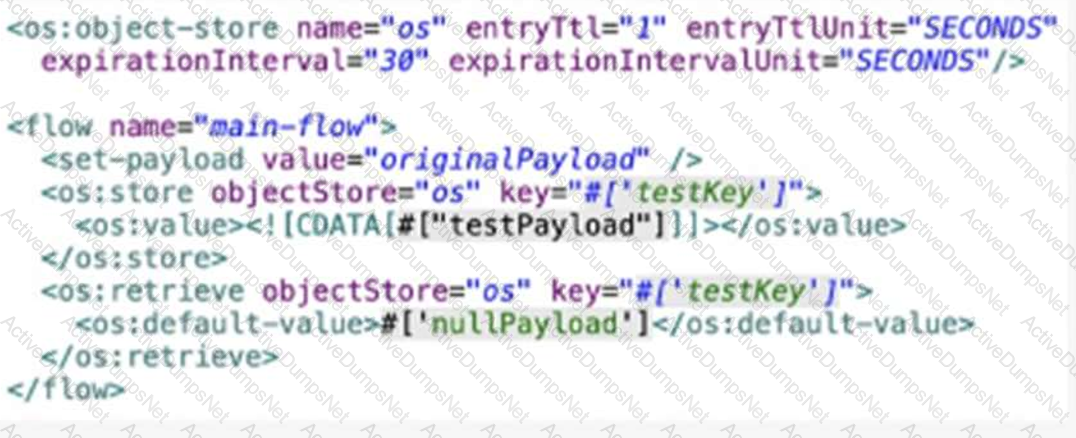MuleSoft MCD-Level-2 MuleSoft Certified Developer - Level 2 (Mule 4) Exam Practice Test
MuleSoft Certified Developer - Level 2 (Mule 4) Questions and Answers
An API has been built to enable scheduling email provider. The front-end system does very little data entry validation, and problems have started to appear in the email that go to patients. A validate-customer’’ flow is added validate the data.
What is he expected behavior of the ‘validate-customer’’ flow?

A developer deploys an API to CloudHub and applies an OAuth policy on API Manager. During testing, the API response is slow, so the developer reconfigures the API so that the out-of-the-box HTTP Caching policy is applied first, and the OAuth API policy is applied second.
What will happen when an HTTP request is received?
Which pattern should be used to invoke multiple HTTP APIs in parallel and roll back failed requests in sequence?
A company has been using CI/CD. Its developers use Maven to handle build and deployment activities.
What is the correct sequence of activities that takes place during the Maven build and deployment?
Which statement is true when using XML SDK for creating custom message processors?
An organization uses CloudHub to deploy all of its applications.
How can a common-global-handler flow be configured so that it can be reused across all of the organization’s deployed applications?
Refer to the exhibit.
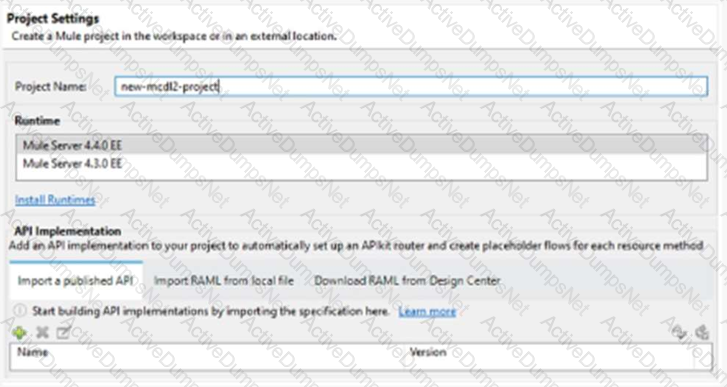
When creating a new project, which API implementation allows for selecting the correct API version and scaffolding the flows from the API specification?
A Mule application uses API autodiscovery to access and enforce policies for a RESTful implementation.
A custom policy needs to be developed to intercept all cutbound HTTP requests made by Mule applications.
Which XML element must be used to intercept outbound HTTP requests?
The HTTP Request operation raises an HTTP CONNECTIVITY error.
Which HTTP status code and body are returned to the web client?
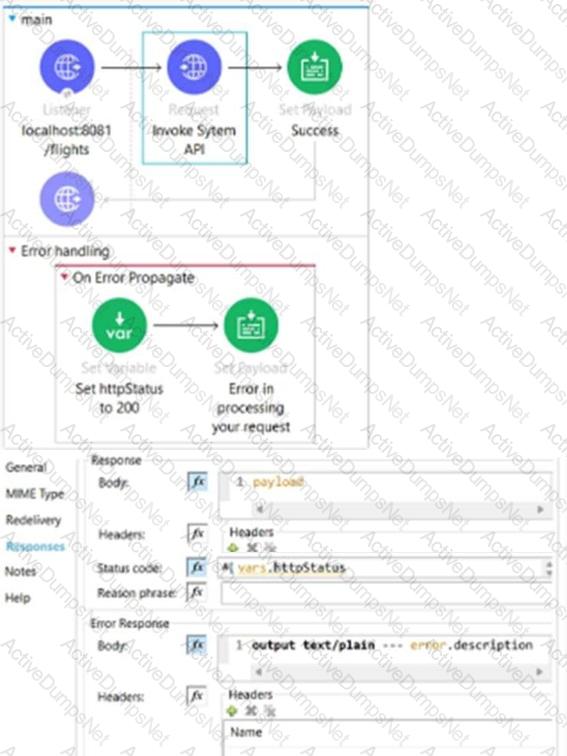
A healthcare portal needs to validate the token that it sends to a Mule API. The developer plans to implement a custom policy using the HTTP Policy Transform Extension to match the token received in the header from the heathcare portal.
Which files does the developer need to create in order to package the custom policy?
A scatter-gather router is configured with four routes:Route A, B, C and D.
Route C false.
Refer to the exhibit.
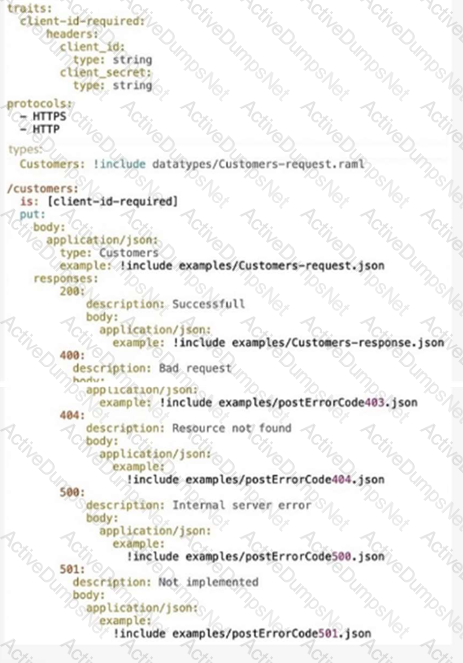
A developer generates the base scaffolding for an API in Anypoint Studio.
Which HTTP status code is returned while testing using the API Kit console if no values are entered in client-secret?
Refer to the exhibit.
What required changes can be made to give a partial successful response in case the United Airlines API returns with a timeout?
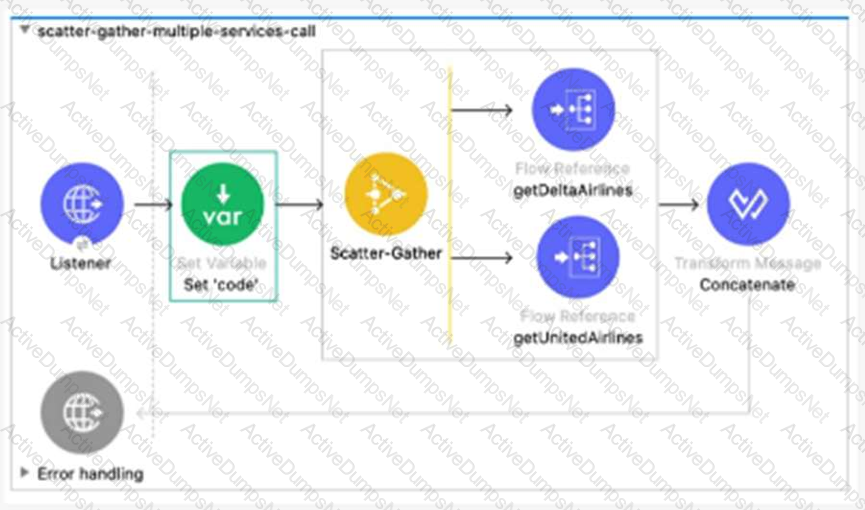
A developer is working on a project that requires encrypting all data before sending it to a backend application. To accomplish this, the developer will use PGP encryption in the Mule 4 Cryptography module.
What is required to encrypt the data before sending it to the backend application?
A Mule API receives a JSON payload and updates the target system with the payload. The developer uses JSON schemas to ensure the data is valid.
How can the data be validation before posting to the target system?
A new Mule project has been created in Anypoint Studio with the default settings.
Which file inside the Mule project must be modified before using Maven to successfully deploy the application?
Refer to the exhibit.
A Mute Object Store is configured with an entry TTL of one second and an expiration interval of 30 seconds.
What is the result of the flow if processing between os’store and os:retrieve takes 10 seconds?
